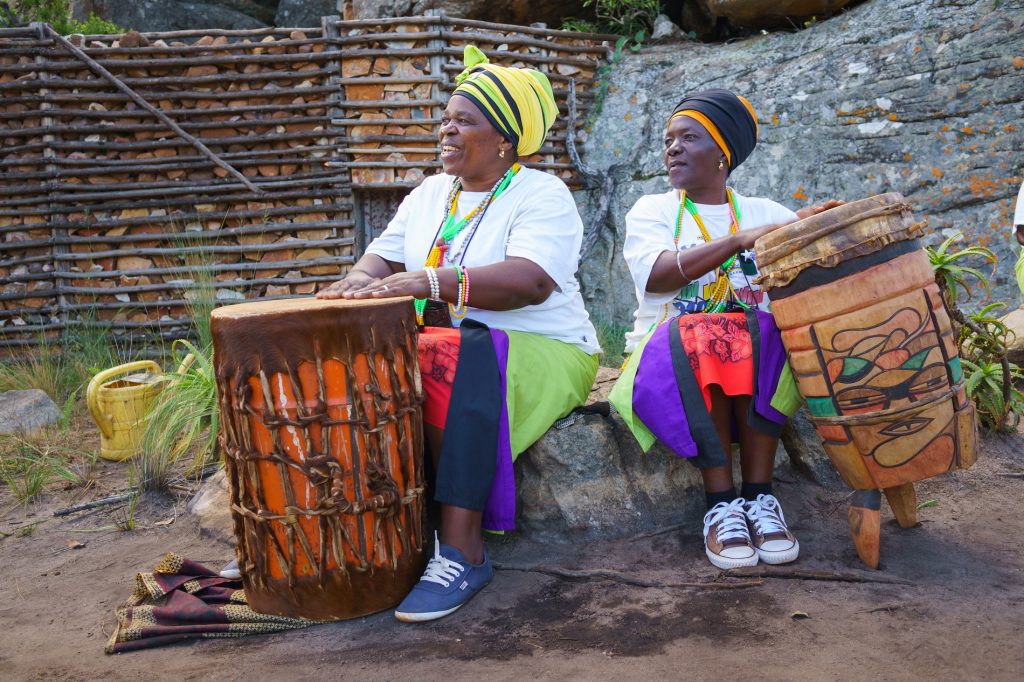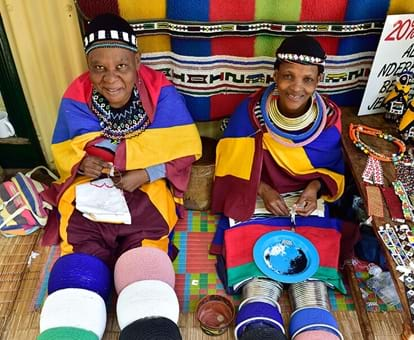See This Report about South African Culture Today
Table of ContentsSouth African Culture Today Fundamentals ExplainedGetting My South African Culture Today To WorkSome Known Facts About South African Culture Today.Facts About South African Culture Today RevealedSouth African Culture Today for DummiesThe smart Trick of South African Culture Today That Nobody is Talking About
A matter of value in Zambian towns is the passing away of loved ones. All participants of the town placed cash, time and initiative with each other for the funeral of the deceased.During the mourning period; men stay outside the home and the ladies remain inside the house of the deceased. After discussing the deceased, the village walks to the location of interment to state their last bye-byes. Songs and dancing is an extremely vital aspect of the Zambian culture. The various tribal devices have their very own dancing kinds; nonetheless, makishi is usual amongst all tribes.
Not known Details About South African Culture Today
When it comes to songs, drums are used one of the most, with a selection of drumming ceremonies. In Zambia, majority of individuals are Christian; Protestant and Roman Catholic. There are small teams of Muslims and Hindus, with the rest complying with neighborhood native tribal ideas.

South African heritage and culture is immensely diverse, and includes lots of various groups of individuals that each have their very own traditions and beliefs. Having such a variety of people and cultures is what makes South Africa so distinct. In truth sense of the expression, we are a rainbow country.
Making it the 7th on the checklist of nations with the most Portuguese people in it outside of Portugal. Portuguese is not only a society, however it is likewise a language and a race. Portuguese people originate from the country of Portugal in Europe, nonetheless, due to Portugal (like lots of various other countries in Europe) checking out the world and dominating other nations throughout the 15th 20th centuries, South Africa has what we call Portuguese South African's living in it.
Indicators on South African Culture Today You Should Know
Among the noticeable functions of the topography is a plateau that covers almost two thirds of the facility of the country. The plateau facility rises towards the southeast, where it culminates in the Drakensberg array, part of a cliff that separates the plateau from the coastal locations. The Drakensburg consists of Sparkling wine Castle, the greatest height in the nation.
The area north of the Witwatersrand, called the bushveld, slopes downward from eastern to west toward the Limpopo River, which creates the international boundary. The western section of the plateau, the middleveld, also descends in the direction of the west and varies in elevation in between the highveld and bushveld. In between the Drakensburg and the eastern and southern shoreline, the land comes down to the sea.
Nearer the coast there is a low-lying plain called the eastern lowveld. Southwest of the plateau the nation comes to be progressively a lot more dry, paving the way to the hostile desert of the Great Karroo, bordered on the east by the lower, much better watered plateau of the Little Karroo. Separating the dry southern inside from the sandy coastal of the southern coast and West Cape is one more variety, the Langeberg.
Things about South African Culture Today
The nation's racially, ethnically, and politically separated background has actually generated nationwide and subnational symbols that still operate as icons of the nation, and others icons that are approved just by specific groups. The monuments to white settler conquest and political dominance, such as the Afrikaner Voortrekker ("pioneer") view website Monument in Pretoria and the Rhodes Monument honoring the British colonial realm contractor and Cape prime minister Cecil Rhodes, remain sectarian signs.
The very first contemporary residents were the San ("bushman") hunter-gatherers and the Khoi ("Hottentot") individuals, who rounded up animals (South African culture today). The San may have existed for hundreds of years and left proof of their visibility in countless ancient cavern paintings ("rock art"). Bantu-speaking clans that were the forefathers of the Nguni (today's amaZulu, amaXhosa, amaSwazi, and vaTsonga peoples) and Tswana-Sotho language groups (today's Batswana and Southern and Northern Basotho) moved below east Africa as very early as the fifteenth century

The 2 former republics of the Orange Free State and Transvaal (South African Republic) were developed by Afrikaner inhabitants who beat and dispossessed the Basotho and Batswana. Lesotho would have been forcibly incorporated right into the Orange Free State without the expansion of British defense in 1869. The supreme marriage of the nation resulted from the South African Battle (18991902) in between the British and both Afrikaner republics, which minimized the nation to wreck at the beginning of the twentieth century.
Afrikaners traditionally considered themselves the just real South Africans and, while giving complete citizenship to all homeowners of European descent, refuted that status to people of shade till the autonomous transition of 1994. British South Africans maintain a feeling of social and social link to Great Britain without damaging their identity as South Africans.
The Ultimate Guide To South African Culture Today
The diversity and fragmentation within ethnic groupings and the balance of stress between those groups during the twentieth century stopped interethnic civil dispute. While intergroup stress over sources, privileges, and political prominence stay, those conflicts are as likely to match Zulu versus Zulu as Zulu against Xhosa or African against Afrikaner.
From colonial India, British merchants and managers brought the rounded metal decorative roofs and slim shoelace work columns that still typify the verandas of homes arounds and cities throughout the nation. Houses of worship contribute a crucial architectural facet even in the smallest towns. Along with the soaring steeples and timeless stonework of Afrikaans Dutch Reformed churches, Anglican churches, synagogues, mosques, and Hindu shrines provide range to the spiritual building scene.

Slaughtering and the developing of conventional grain beer are crucial in protecting the engagement and goodwill of the ancestors that are thought about the guardians check over here of good ton of money, success, and well-being. Indian communities preserve their indigenous cooking traditions and apply them his explanation on Islamic and Hindu routine and ritualistic celebrations. Afrikaners and Coloured people gather at weekend breaks and unique events at multifamily barbeques called braais, where area bonds are enhanced.
Due to the fact that this was the primary economic venture of both black Africans and white colonists, conflict between those groups fixated the ownership of grazing land and animals. In 1867, the biggest ruby down payments worldwide were uncovered at Kimberley in the west main location. The riches from those areas aided fund the exploitation of the best gold coral reef on the planet, which was uncovered on the Witwatersrand in 1886.
The Ultimate Guide To South African Culture Today
This brought about misconceptions and purposeful misstatement in the transactions of white settlers and federal government officials with African principals throughout the colonial duration (South African culture today). In the facility of African reserves, some facets of public and mainly "tribal depend on" land tenure were preserved, and even in white backwoods, kinds of common period were still exercised in areas with African communities
After the autonomous change of 1994, programs for land restitution, redistribution, and reform were instituted, but progression has actually been slow. The white minority still manages eighty percent of the land. In the wake of farming land invasions in Zimbabwe, the Division of Land Affairs has actually vowed to speed land redistribution.